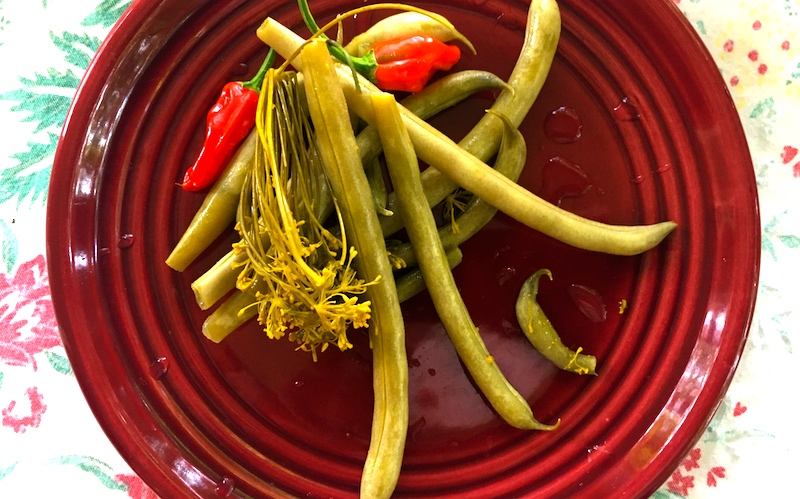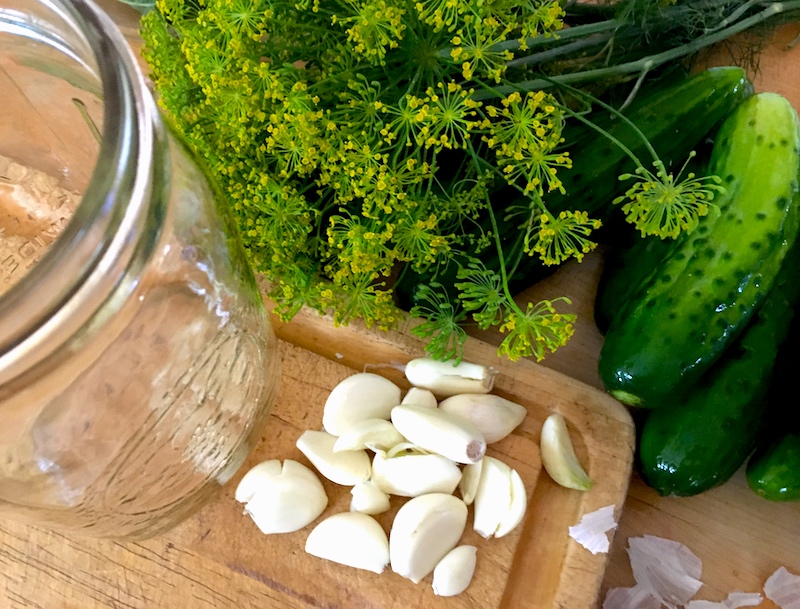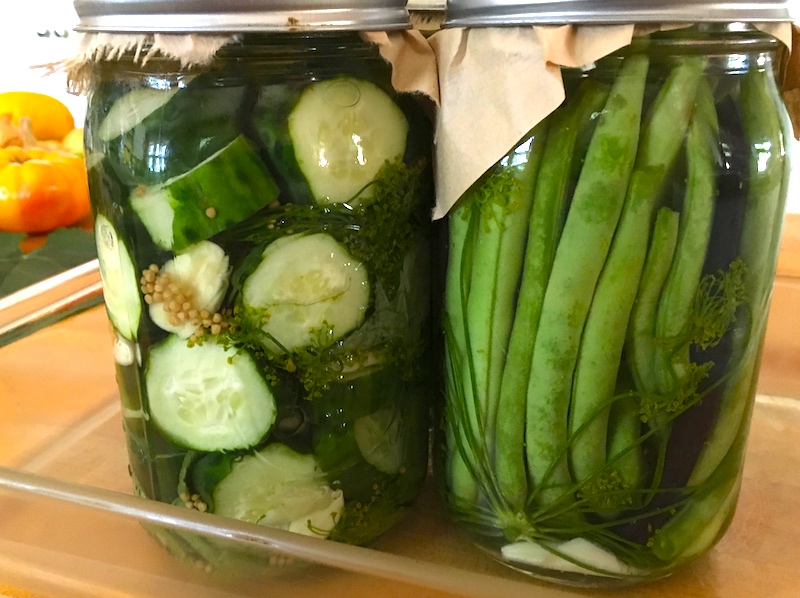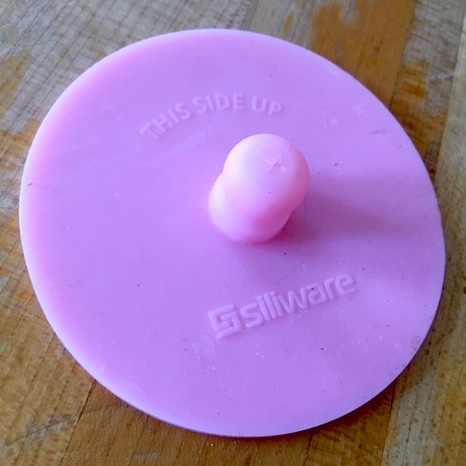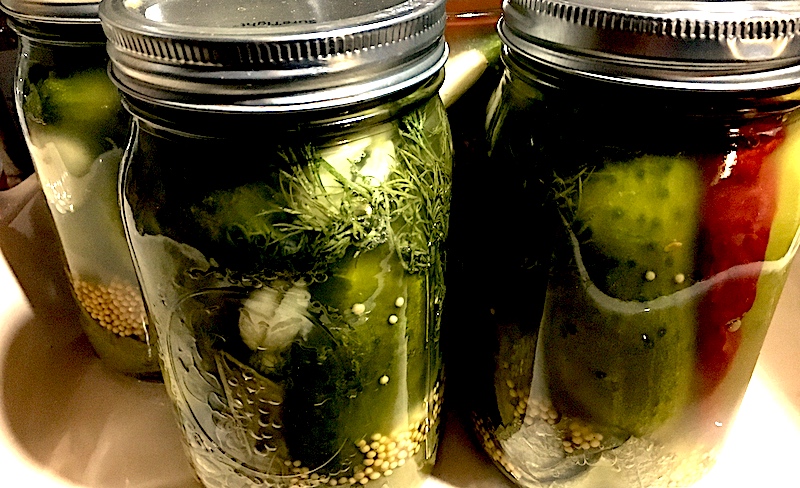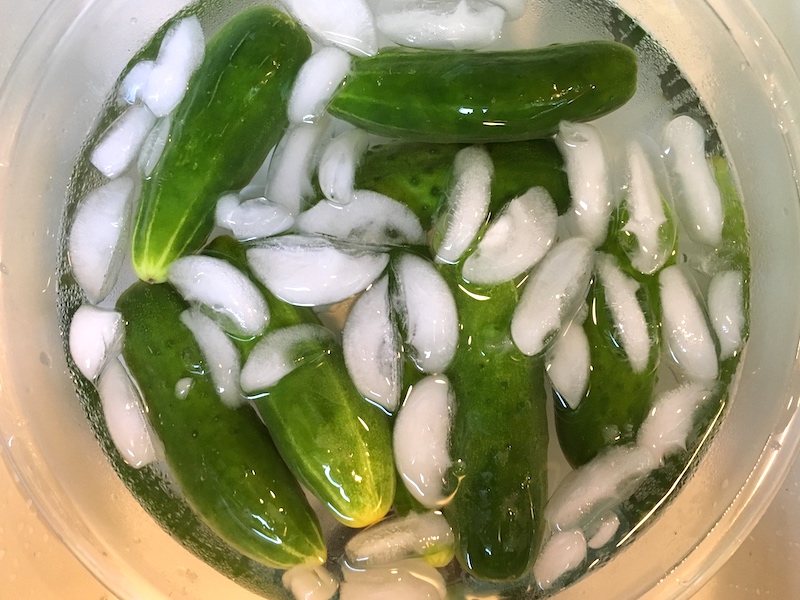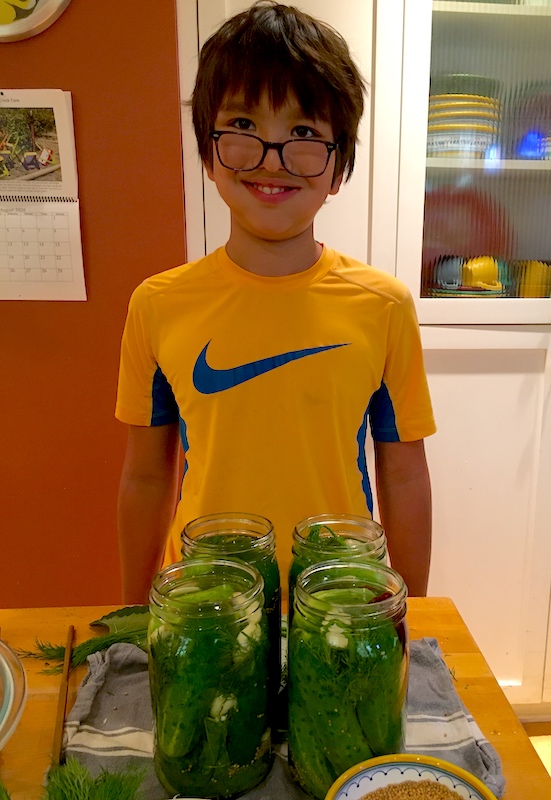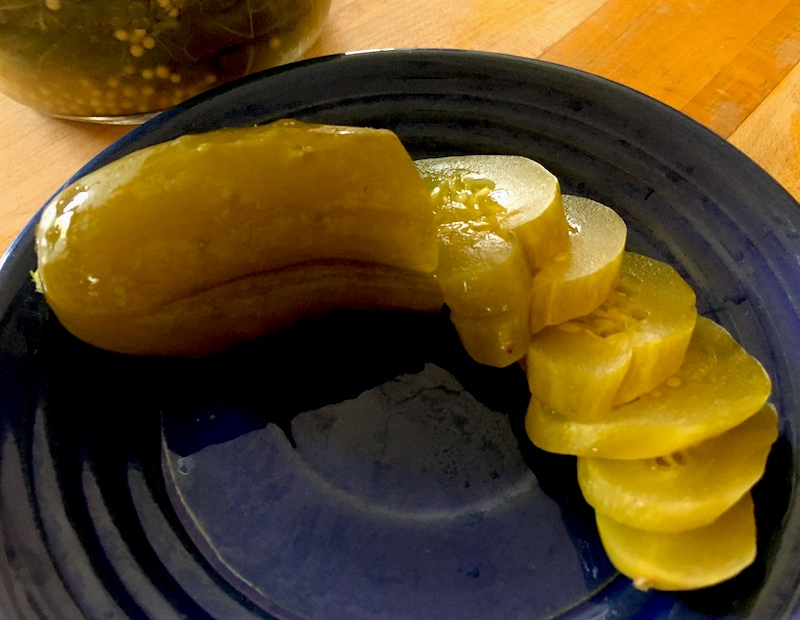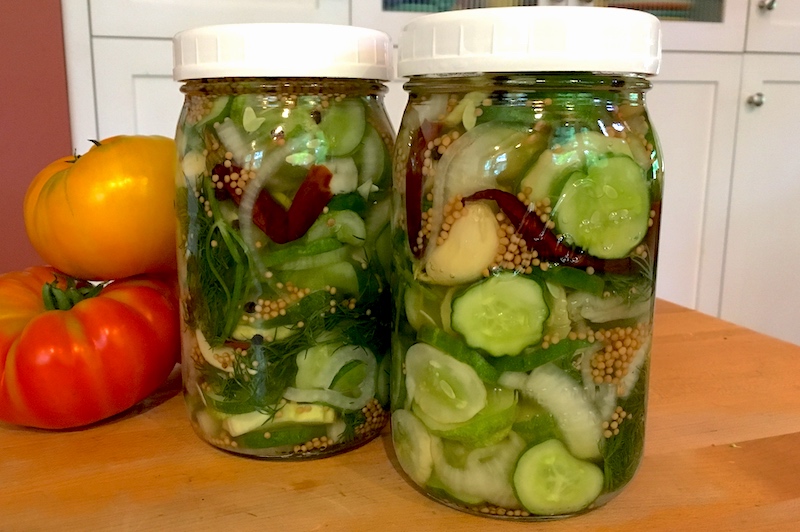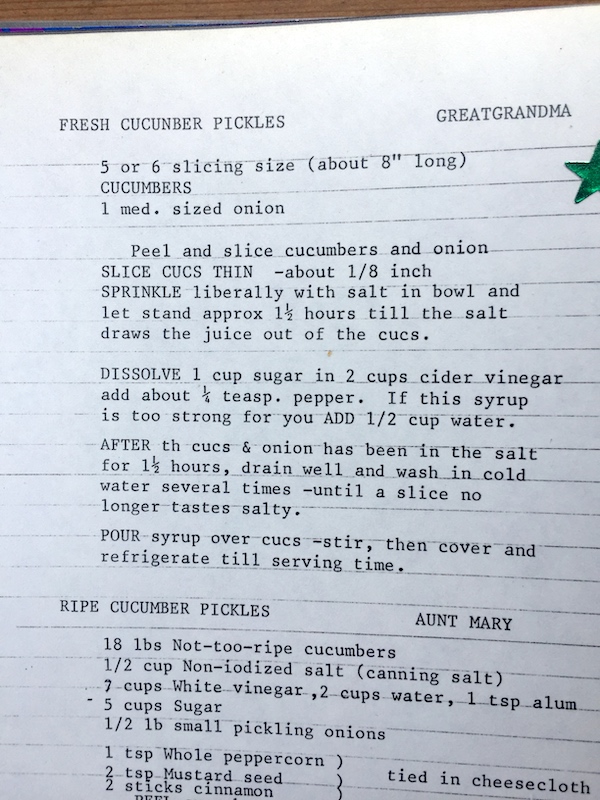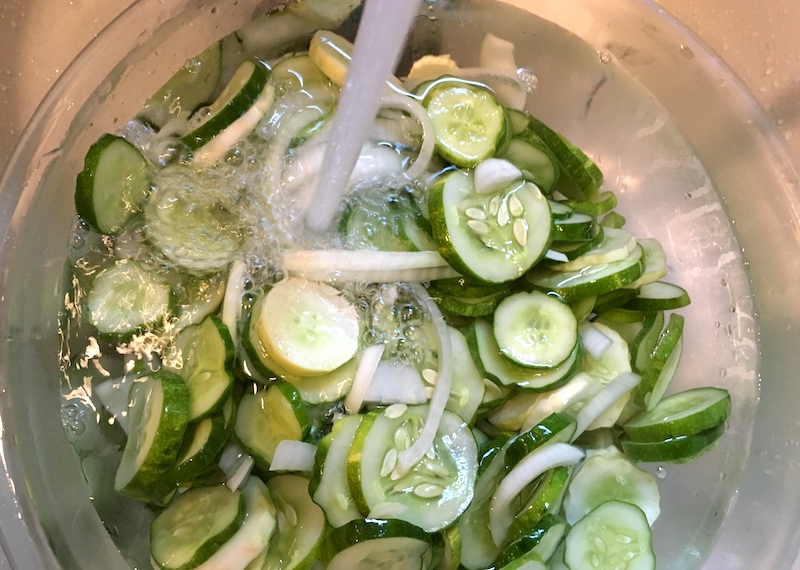
In Season: Mexican-style Escabeche
Peppers are popping at our farmers' markets. When I went to the Hollywood Farmers' Market to pick up our CSA share from Stoneboat Farm then wandered the aisles to see what else I might need, there were brilliant red sweet Italian peppers, fluorescent green anaheims, sunshine-yellow sweet peppers, and grassy green serranos, jalapeños, poblanos, shisito and, of course, those sneaky-but-irresistible padrons.
I was hoping to make Hank Shaw's Nopales en Escabeche, but in a fairly thorough search I couldn't find cactus paddles anywhere. But, instead of calling off the whole shebang, I bought a pound of jalapeños from Eloisa Organic Farm and decided to proceed with the plan, using the carrots and onion I had in my CSA bag.

Mexican escabeche is that ubiquitous condiment familiar to anyone who's been to Mexico or has frequented an authentic Mexican restaurant. A combination of quick-pickled vegetables, it usually includes jalapeño peppers, carrots, onions and garlic, but can also have cauliflower, red onion, jicama or radishes in the mix.
The vegetables are generally sautéed for a few minutes—some recipes char the whole jalapeños in a hot cast iron pan—then the ingredients are simmered in the brine for a short period before being spooned into quart jars with the remaining brine. You can either seal them with a canning lid and, once they're cool, store them in the fridge, or water-bath can them so they're shelf-stable. The escabeche should then be ready to eat within a week and you're free to include them in tacos, tostadas, nachos, egg dishes, grilled meats or anything that could use a little pickley zing.
Mexican-style Vegetable Escabeche
1 Tbsp. neutral oil
1 lb. whole jalapeños
1 medium white, yellow or red onion, halved lengthwise, then thinly sliced vertically
3 medium carrots, halved lengthwise then sliced into thin coins or bite-size pieces
1 head of garlic, cloves separated and peeled
2 bay leaves
1 tsp. dried oregano
1/4 tsp. dried thyme
1 1/2 c. water
1 1/2 c. white vinegar or white wine vinegar
Heat oil in a large sauté pan over medium-high heat. Place onions in pan and sauté for approximately 2 minutes.
Add jalapeños, carrots and garlic into the pan and cook until fragrant, about 2 minutes. Stir frequently to prevent the vegetables from sticking and burning.
Add the rest of the ingredients to the pan and bring to a boil. Cover and reduce to a simmer for 15 minutes, or until carrots and jalapeños are tender. Remove from heat.
Using a slotted spoon, transfer vegetables into two clean wide-mouth quart jars and fill with brine that remains in pan. Place canning lids on jars and seal with canning rings. Cool to room temperature and store in fridge, or water-bath can them according to canner directions.
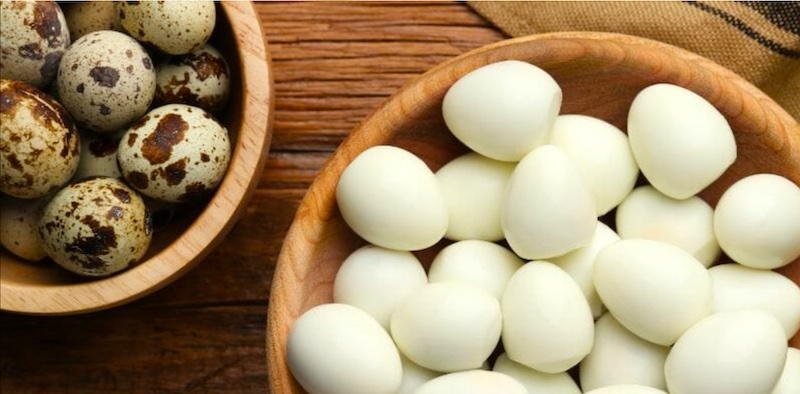
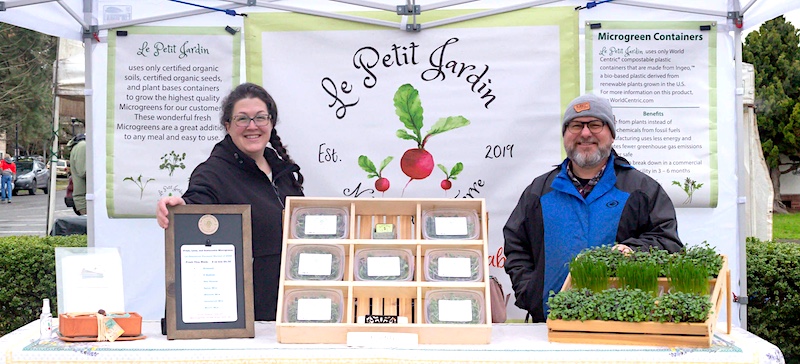
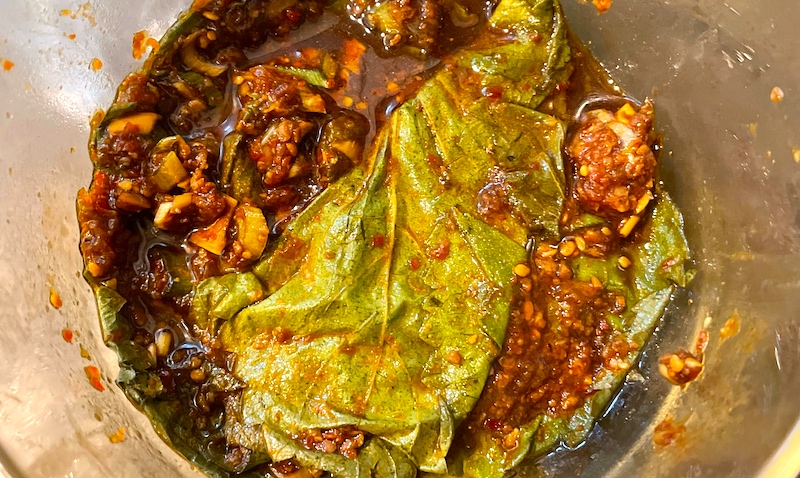
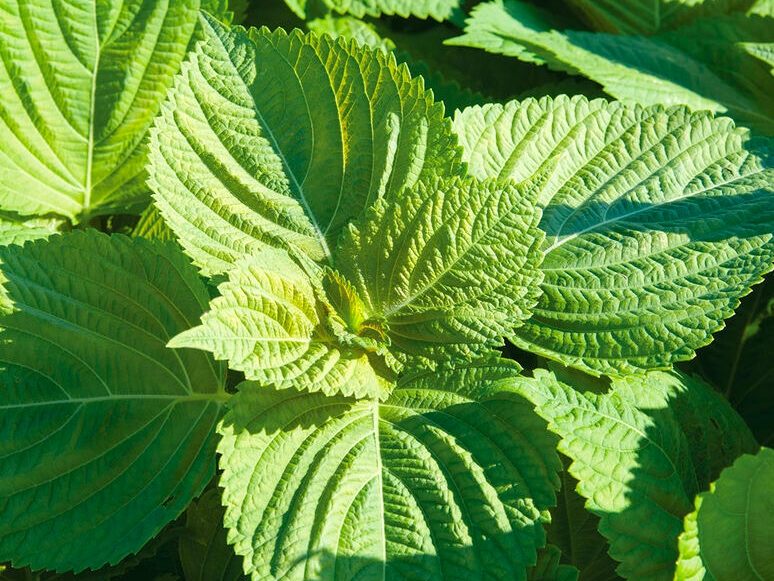 It's made using shiso leaves, halfway between a leafy green and an herb that the New York Times described as "a mysterious, bright taste that reminds people of mint, basil, tarragon, cilantro, cinnamon, anise or the smell of a mountain meadow after a rainstorm." (Ooooookay…?) I'd say it's flavor is on the same spectrum as cilantro: definitely pungent, with a slightly minty twang. Shiso is, for me, a little strong to use in a salad, for instance, but the process of fermentation and the other ingredients in the brine—soy, ginger, garlic and the Korean ground peppers called gochugaru—seem to tame its somewhat, shall we say, overpowering personality.
It's made using shiso leaves, halfway between a leafy green and an herb that the New York Times described as "a mysterious, bright taste that reminds people of mint, basil, tarragon, cilantro, cinnamon, anise or the smell of a mountain meadow after a rainstorm." (Ooooookay…?) I'd say it's flavor is on the same spectrum as cilantro: definitely pungent, with a slightly minty twang. Shiso is, for me, a little strong to use in a salad, for instance, but the process of fermentation and the other ingredients in the brine—soy, ginger, garlic and the Korean ground peppers called gochugaru—seem to tame its somewhat, shall we say, overpowering personality.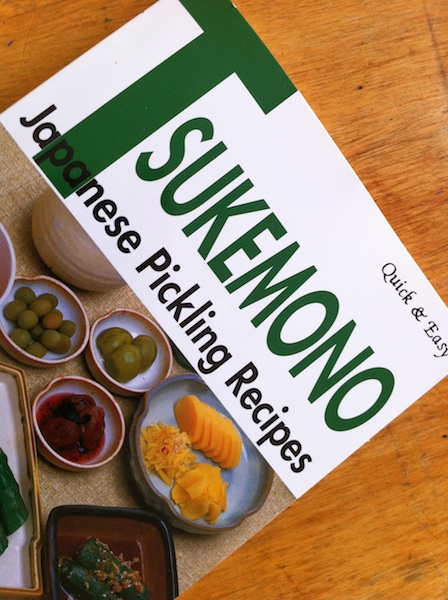 The recipe is adapted from a book I absolutely love,
The recipe is adapted from a book I absolutely love, 